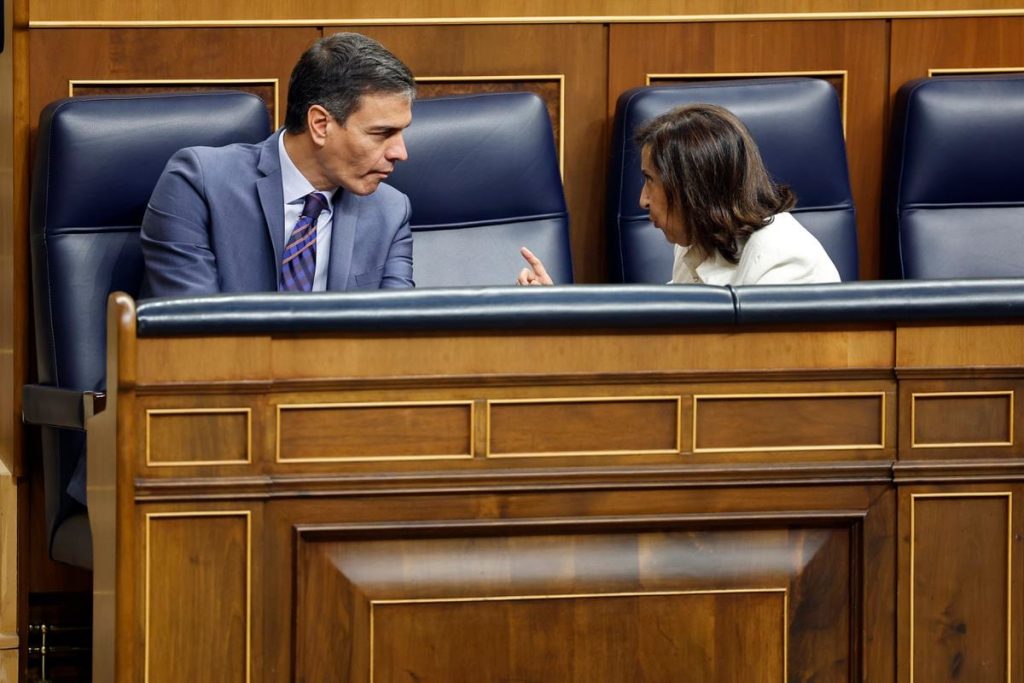The Spanish Prime Minister, Pedro Sánchez, will attend the NATO summit in Washington from July 9 to 11 this year with unfinished homework. Despite a 26% increase in defense spending last year, Spain remains at the bottom of military spending among allied countries, with 1.24% of GDP, only ahead of Belgium and Luxembourg. The failure to approve this year’s Budget makes it very difficult, according to experts, to meet the commitment to reach 2% of GDP in military spending by 2029, agreed at the NATO summit in Madrid two years ago. The Washington meeting is significant as it commemorates the 75th anniversary of the founding of the Atlantic Alliance, with President Joe Biden as the host, just four months before the US presidential elections.
Data from NATO shows that only 11 of the 30 member countries surpassed 2% of GDP in military spending last year, while other five were close with 1.79% or more; and 14 countries fell short of the target set at the 2014 Wales summit, which gave a decade to achieve it; that is, until this year. The Ministry of Defense was aiming to reach 1.40% of military spending in 2023, but Spain’s strong economic growth left it 16 tenths away from achieving it. The non-approval of the new budget requires Defense to go back to the starting point of 2023, negotiating with the Treasury for credits to finance operations abroad or ongoing arms programs. The possibility of reaching the planned 1.30% of GDP for this year seems remote.
The paradox lies in the fact that some of the countries exceeding 2% of military spending, in theory, are the ones to which Spain is providing security because they cannot guarantee it themselves: such as Lithuania, Latvia, Slovakia, and Romania, where Spanish troops are deployed to counter the Russian threat. Despite Spain being the fourth-highest contributor to NATO operations, experts agree that the risk of Trump winning the November elections and turning his back on Europe, leaving it vulnerable to Russian expansionism, is a real concern. European autonomy, once an aspiration, is now considered an urgent necessity.
In an unprecedented move, Pedro Sánchez met with the top executives of Spain’s 22 leading defense companies on March 18 at La Moncloa. The Government reaffirmed its commitment to reach 2% of GDP in military spending by 2029, despite the decision not to approve this year’s budget, while encouraging the companies to expand their production capacity to meet Ukraine’s needs and take advantage of the opportunities presented by the EU’s first Industrial Defense Strategy. Spain also approved its own Defense Industry Strategy in 2023, aimed at increasing strategic autonomy, contributing to the European Defense, and building a competitive and sustainable defense industry and technological base.
Following the meeting at La Moncloa, Defense confirmed the delivery of 19 Leopard 2 tanks to Ukraine, which are being repaired by Spanish defense companies at a cost exceeding 8.5 million euros. The goal is for future arms deliveries to Ukraine to come from Spanish defense companies rather than the depleted arsenals of the Spanish Armed Forces. This aligns with the objectives set by the Government to triple investment in military equipment and arms from 7 billion euros in 2023 to 21 billion euros by 2029. The focus is on enhancing Spain’s defense capabilities while contributing to European defense efforts and boosting the domestic defense industry.


